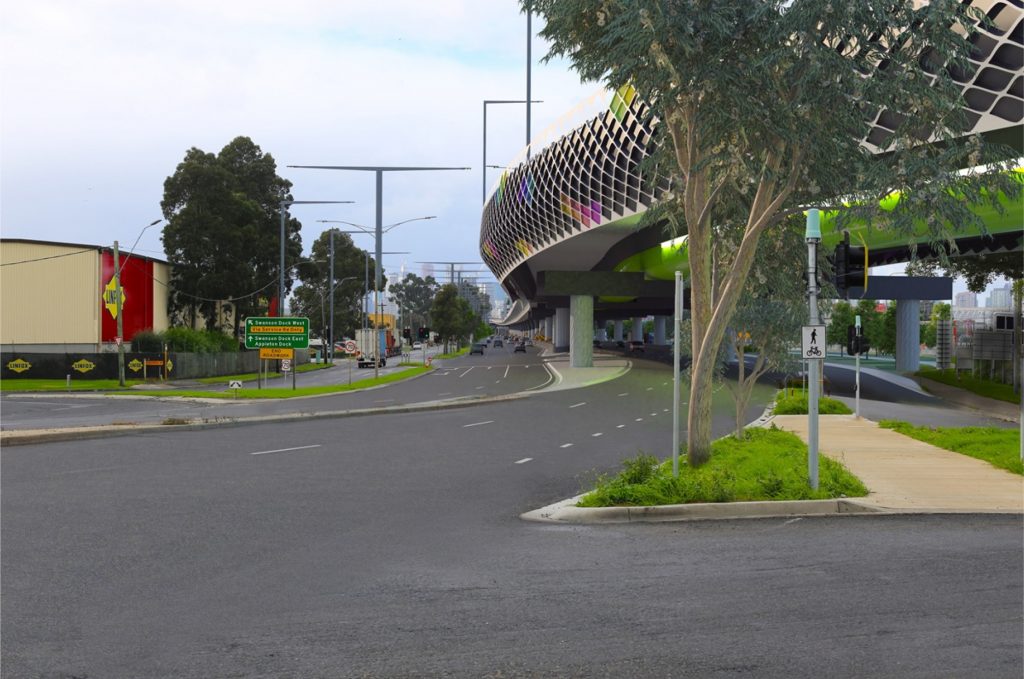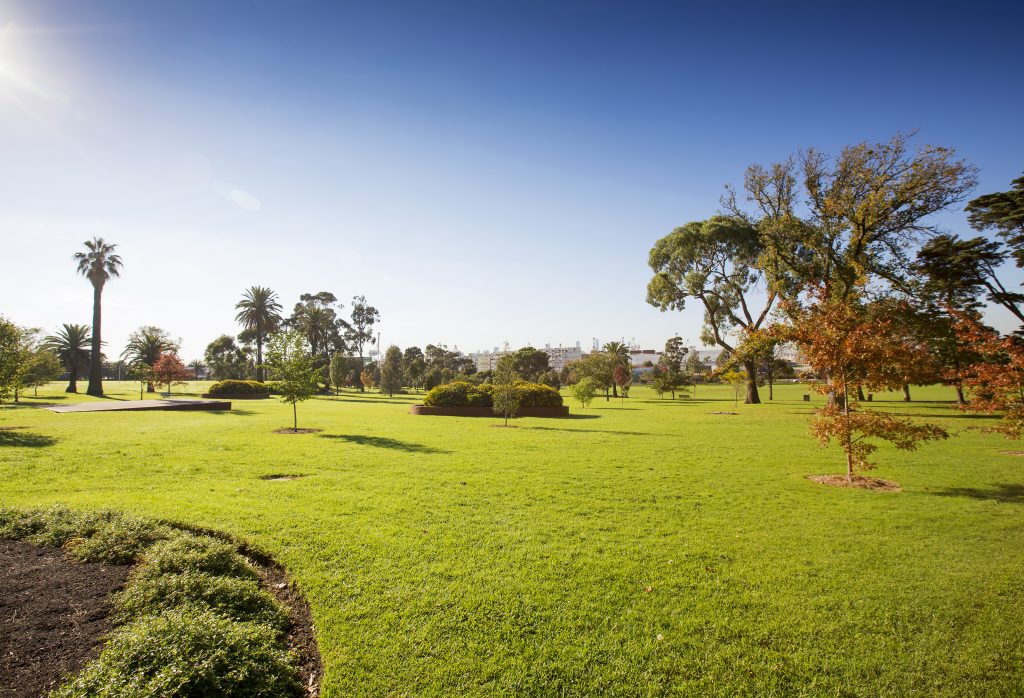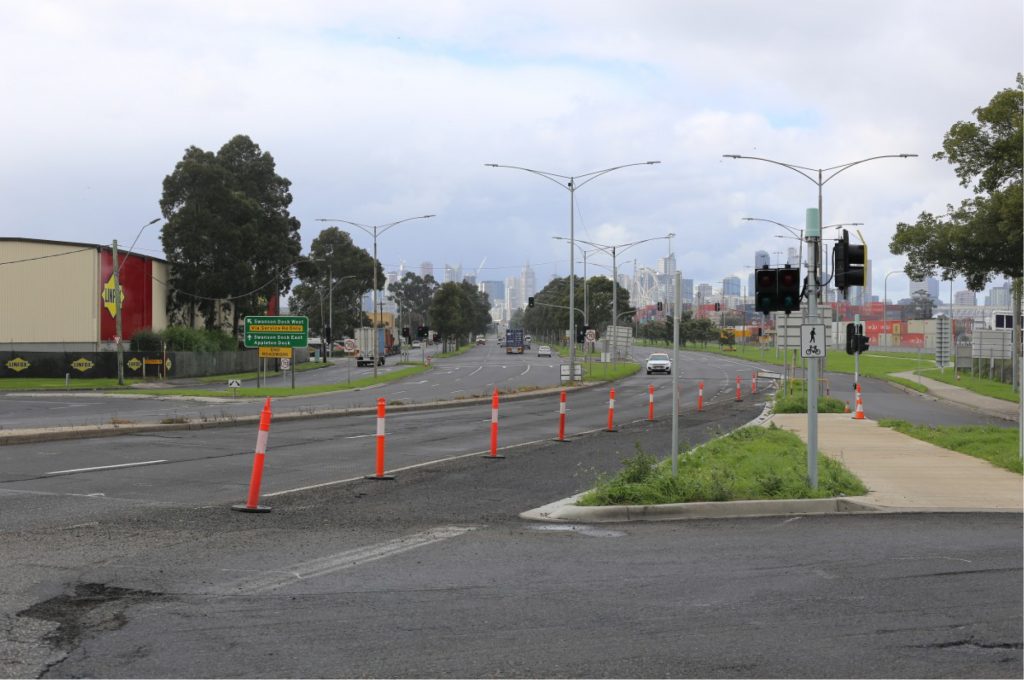UPDATE: West Gate Tunnel Project

13th September 2017
Yesterday the National Trust made a submission at the independent Inquiry and Advisory Committee (IAC) hearing, which is considering the Environmental Effects Statement (EES), and public submissions, in relation to the proposed West Gate Tunnel Project. As documented on our blog here, our original submission to the EES raised concerns regarding the impact to natural heritage due to widespread losses of healthy mature trees, long term impacts on native vegetation, particularly within the waterways and environs of Moonee Ponds Creek and Stony Creek, and the visual impact on various heritage places throughout the project. Our submission to the public hearing yesterday highlighted further serious concerns, including the extent of engagement with Traditional Owner Groups, the substantial green infrastructure that is proposed to be removed across the entire footprint of the project, and the proposed twin elevated road structures above Footscray Road.
To read our submission in full, click here.
Engagement with Traditional Owner Groups
We began our submission yesterday by highlighting our concerns regarding the apparent lack of engagement with Traditional Owner Groups in local areas, particularly with regard to the use of design motifs that reference Aboriginal cultural heritage. We note that Chapter 6 of the Environmental Effects Statement Main Report Volume 1 states, “a key and underpinning reference that informs the whole of the urban design approach is a strong connection with Victorian Aboriginal culture” concluding that “further detailed consultation with local Traditional Owner Groups would be undertaken during detailed design development to ensure the concept is culturally authentic, sensitive and appropriate” (page 6-8). Although the EPR LVP1 states that detailed design must respond to the WGTP urban design principles and vision, as documented in Chapter 6, we note that these principles and vision do not make overt mention of Aboriginal culture, Aboriginal cultural design elements or local Traditional Owner Group consultation, where they could usefully be included, in addition to the Key considerations section of the same chapter.
We note that the Urban design references (page 6-10, Chapter 6) and in Mr Woods Urban Design and Landscape presentation part 1 (click here for Part 2, Part 3, Part 4 and Part 5 of this presentation) the “Victorian Aboriginal design references” are given as a set of images of eel and fishing nets, traps and a bark canoe, none of which originate in the local Traditional Owner Groups, which raises concern as to the extent of meaningful engagement with local Traditional Owner Groups at earlier stages of the project. We have suggested that engaging an organisation such as Indigenous Architecture and Design Victoria to provide expert advice regarding the design of the project and appropriate consultation.
We also noted that the project represents an opportunity to move beyond symbolic recognition through design to create meaningful outcomes for Aboriginal Victorians through employment opportunities in both the design and construction phases of the project.

Cultural References presented as part of the Urban Design and Landscape expert evidence by the Western Distributor Authority. We have noted in our submission that none of these references originate in Victoria, and have encouraged further consultation with local groups to be undertaken to ensure any references to Aboriginal cultural heritage are culturally appropriate.
We have also put support behind the inclusion of an EPR for a Heritage interpretation strategy (CHP7) which states a requirement for developing and implementing a heritage interpretation strategy for the project that explores historical and Aboriginal cultural heritage themes. However in our submission we noted that the EPR states: “The strategy may include installation of signage regarding local heritage places…” (page 8-27, Environmental Management Framework). The on-the-ground implementation of this strategy is of utmost importance, and we therefore recommended that responsibility for installation of such signage is assigned to a relevant authority. We recommended that either the wording of this EPR is changed to “The strategy must include installation” or provide assurances that the relevant authority has been consulted and has agreed to be able to implement such a plan. We also noted that consideration to the project phase, particularly the ability to install such signs during and possibly at the conclusion of construction should also be considered. Furthermore, we recommended an inclusion in this EPR, that Traditional Owner Groups are consulted and meaningfully engaged in the development of the interpretation strategy.
Tree Removal
In our submission yesterday we also emphasised our serious concerns regarding the substantial green infrastructure that is proposed to be removed across the entire footprint of the project with an estimated 3,347 trees degraded or removed, including 2,954 medium to long term viability trees (documented in Technical report F Ecology). This represents a considerable loss of the amenity, visual and heritage value of trees. Our National Trust expert Significant Tree Committee notes that the west of Melbourne already currently experiences low canopy tree cover, relative to other suburbs in proximity to Melbourne CBD. Despite the WGTP proposed tree replacement and offset, the significant loss of trees at this scale, especially trees of 30-50 years cannot be underestimated. The expected minimum time for replacement of amenity and heritage value to the community from advanced tree replacement works of this scale would be 20 years, in addition to the significant loss of carbon sequestered by mature trees removed. We would expect that many of these trees to be removed would have a useful life expectancy of greater than 50 years and many in excess of 100 years.
There are key factors regarding the value of trees to be considered in an urban environment, including amenity and shade provided by these trees, many of which are medium to long term viability trees, already providing such benefits. Our expert Significant Tree Committee advises us that the average amenity provided by these trees would have an average monetary value of $2000-$5000 each, depending on age, size and condition with some worth much more. This would equate the removal of tree assets across the project to be at a value of between $7 and $17.5 million.

Yarraville Gardens, significant as one of the earliest surviving public gardens in the municipality. We have submitted that tree removal at the northern end of the gardens is unacceptable. We have also raised concerns that the proposed Northern portal ventilation structure, which would stand in excess of 50m height (higher than the containers on the horizon of this photo), would have an adverse visual impact on the environmental values of the garden. Photograph from the City of Maribyrnong website.
Elevated Road Structures above Footscray Road
The project proposes twin elevated road structures above Footscray Road between the Maribyrnong River and the existing intersection of Footscray Road and Appleton Dock Road. Currently this section of Footscray Road is a boulevard with dual lanes in either direction and a service lane on the northern side. The road consists of three distinct rows of canopy trees, mainly Eucalypt species with some exotic trees, planted at regular intervals between lanes in each direction. As documented in Steve Schutt’s expert evidence on open space and landscape given by the City of Melbourne these trees their height varies between 5 and 15 metres (page 6-7, Statement of landscape and open space evidence) and they are “mature, native canopy trees…and provide a positive contribution to the ‘boulevard’ character of this roadway” (page 36).
We noted that the significance of Footscray Road as a tree lined boulevard in an industrial area should be valued. The canopy trees that line either side of the road provide a welcome visual buffer between the road and the adjoining industrial land uses. As such the continuity of tree planting along Footscray Road is significant as providing a green and leafy gateway to Melbourne’s west. This is a new boulevard to be compared and contrasted with the great 19th century boulevards of Melbourne, such as St Kilda Road and Royal Parade. Although the boulevard character of Footscray Road has suffered some degradation since its initiation in the early 1960s, the current trees are in excellent condition and have the potential in the next 20 to 30 years to mature into significant canopy trees with high aesthetic values and wide canopy spreads, further enhancing its boulevard character comparable to Melbourne’s significant 19th century boulevards.

Current conditions of Footscray Road show its boulevard characteristics, with rows of Eucalyptus lining either side of the road. Photograph from the EES documentation, Technical Report N Landscape and visual.

Photomontage showing the project 10 years after completion. The elevated road proposed will require the removal of the central median with all trees that are currently planted here. We have submitted that this is would have an unacceptable detrimental impact on the values of Footscray Road as providing a green and leafy gateway to the west. Photograph from the EES documentation, Technical Report N Landscape and visual.
The WGTP proposal for a twin elevated road structure along the Footscray Road corridor would see the removal of all trees down the central median of Footscray Road, as well as possible tree removal on the southern side. This will see a substantial visual impact on the experience of Footscray Road for motorists and shared path users alike. We agree with the City of Melbourne’s expert evidence that “the removal of the central avenue of trees…will fundamentally alter the amenity of the roadway corridor, by replacing a natural, vegetative canopy with a solid, bulky and impenetrable overhead structure” (page 36).
We submitted that the community’s appreciation of the heritage significance and amenity value of these trees should be considered by the public hearing. We do not expect that proposed works can reinstate this current boulevard to an equal or improved landscape characteristic, with large canopy trees at regular intervals. As such we submitted that this proposal would have an unacceptable detrimental impact on the values of Footscray Road. We do not consider that additional tree planting on the southern side of the road, as proposed by the project would sufficiently mitigate the adverse effect of an elevated road structure at this location and as such we support the City of Melbourne’s expert evidence that alternatives to an elevated road structure should be considered at this location.
To read our submission in full, click here.
Media:
12 September 2017, ‘Concerns grow over impact of West Gate Tunnel Project’, Star Weekly: http://www.starweekly.com.au/news/concerns-grow-over-impact-of-west-gate-tunnel-project/

Footscray Road, as it is today. The green leafy gateway to the west should be protected, given the scarcity of such values generally across the west. These trees are in excellent condition and will grow over the next 20-30 years to become a more impressive boulevard. Image from Google maps.

Close to the same position on Footscray Road, travelling toward the city, this flythrough view shows the large extent of the elevated road structure proposed by the WGTP. This view was provided at the request of the City of Melbourne as part of the public IAC hearing.

+ There are no comments
Add yours